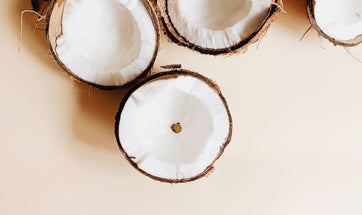how does cbd interact with cannabinoid receptors in my body?
When reading about the effects of CBD, you’ve likely encountered phrases such as “cannabinoid receptors” and “the endocannabinoid system,” — which can seem confusing for someone who doesn’t have a medical background. For instance, bet you didn’t know that the endocannabinoid system helps restore balance in your body by regulating the body’s immune, nervous and digestive systems, did you? CBD plays a big part in that.
To better understand all of these terms, here’s a guide to explain how CBD interacts with cannabinoid receptors in a person’s body to keep you at your best.
First, we should note there are two main cannabinoid receptors in the human body: CB1 and CB2. CB1 receptors are mostly found in the brain, while CB2 receptors are mostly found in other parts of the body. These receptors are activated in the body when the body produces endocannabinoids, which are neurotransmitters that send messages throughout the body; similar to serotonin or dopamine.
When these endocannabinoids are produced naturally throughout the body, they will activate the cannabinoid receptors. This will then produce various effects and benefits for the person.

The endocannabinoid system ensures homeostasis, or balance, throughout the entire body. When the body experiences a stressor, it produces endocannabinoids to help address it. This helps keep the body in balance at all times.
So what does any of this have to do with CBD? CBD does not directly bind and activate the cannabinoid receptors the way other cannabinoids can. For instance, THC will bind and activate CB1 receptors in the brain, which will then produce the “high” people feel when using marijuana.
CBD actually doesn’t directly interact with the body’s cannabinoid receptors, though. CBD has a low affinity for cannabinoid receptors, which means it’s not the receptors’ first choice. If other cannabinoids or endocannabinoids are present, the receptors will instead interact with those instead of CBD. However, CBD affects the cannabinoid receptors through pleiotropy, which is a term for when a compound or gene produces indirect effects on the body.
The main way CBD interacts with cannabinoid receptors is by helping increase the amount of endocannabinoids in the body. Endocannabinoids are naturally created by lipids, or fats, in the body. After these lipids begin synthesizing endocannabinoids, an enzyme will stop the process so it doesn’t continue indefinitely. CBD actually inhibits the function of these enzymes temporarily, so more endocannabinoids will be produced — and, therefore, more cannabinoid receptors will be activated.
To explain this simply, imagine the endocannabinoid system as a machine. The lipids turn on the machine to start making endocannabinoids. The lipids cannot turn the machine off, though, so the enzymes have to turn them off. CBD basically blocks the switch from being turned off temporarily by the enzymes.
By doing so, CBD indirectly boosts the production of endocannabinoids, and those endocannabinoids help fuel the endocannabinoid system to maintain the body’s balance. So while your endocannabinoid system will work without taking CBD, using it helps give it a little boost.
Ultimately, the answer to how CBD interacts with cannabinoid receptors is a little complicated because it’s through indirect means. But now you know that, when regularly taking CBD products, they’re definitely helping in some positive way to restore balance in your body.
Discover the right CBD product for you here.
Want to learn more? Sign up for our newsletter, here!
OUR NEWSLETTER
Get the latest news you need, straight to your inbox.




